The trash you collect on land—if left behind—can be carried by rain and wind to the sea,
where it becomes marine debris.
Learn more about the global issue of ocean waste.
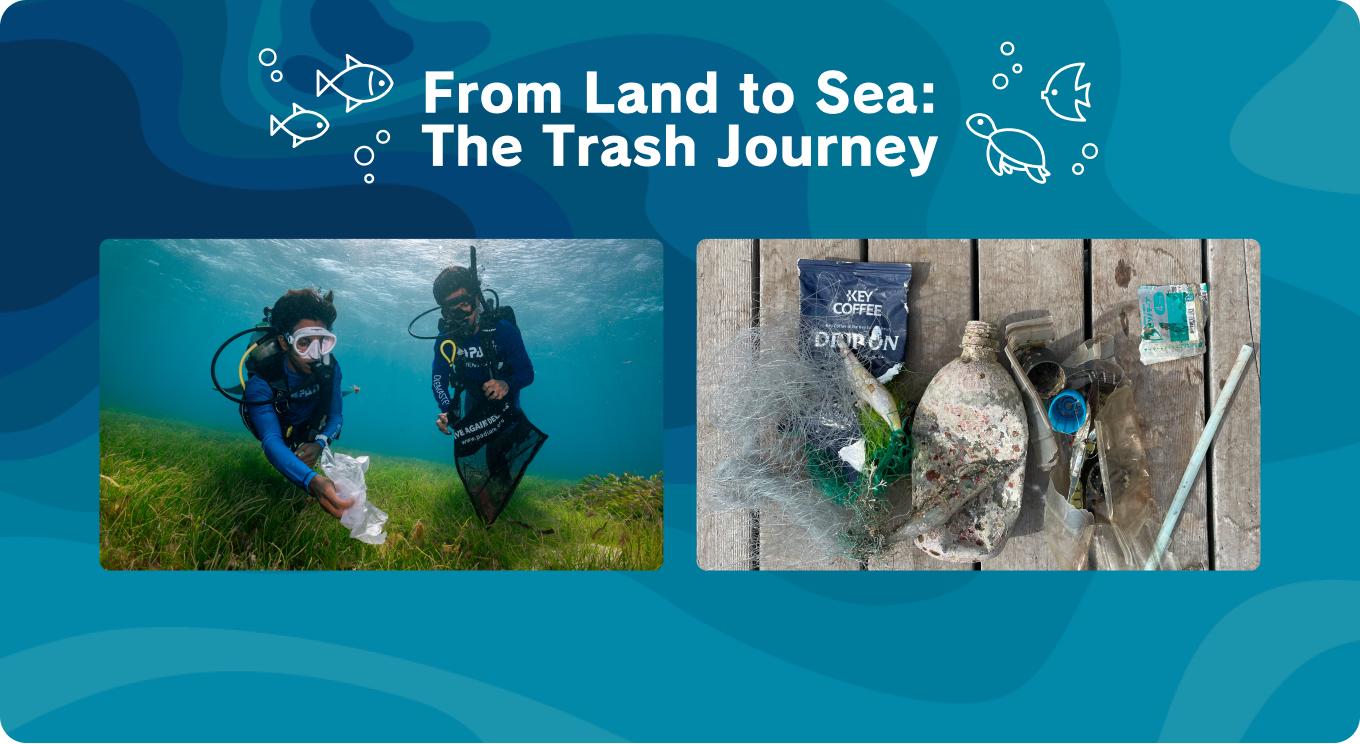


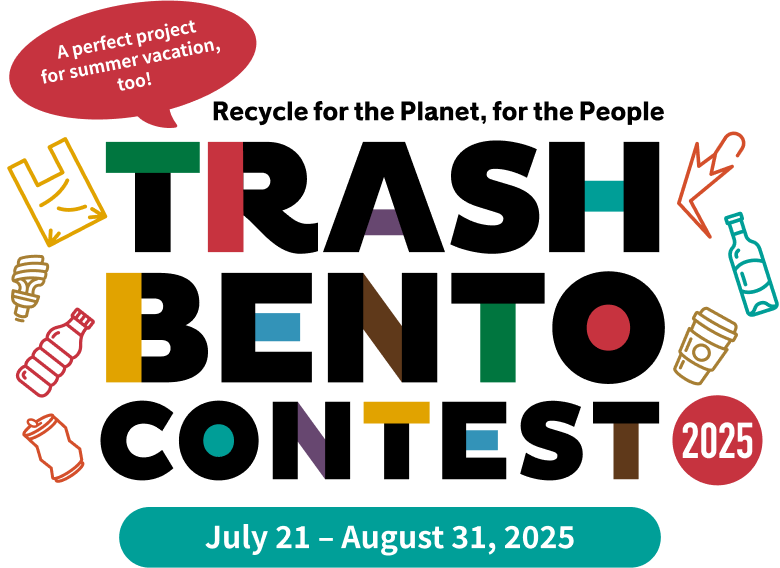
Application submissions have been closed. Thank you for the many applications.
We're planning to hold this in 2026 as well. Stay tuned!
The winning entries will also be displayed at our
booth at Eco-Pro 2025 (December 10-12).

Over the course of a year,
we unknowingly consume the equivalent
of one lunchbox worth of plastic waste.
The waste problem is no longer just an environmental issue—
it’s a threat to our health as well.
Launched last year
with the hope of taking a first step
toward solving an ongoing challenge,
the Trash Bento Contest welcomed
incredible entries from across Japan.
The contest drew attention
at the EcoPro exhibition and sparked action
in local communities—raising awareness about waste issues nationwide.
And now, it's back again for 2025!
Pick up litter,
let your creativity run free,
and turn what you find into
a one-of-a-kind creation.
Maybe you care about the environment.
Maybe you love making things.
Maybe you're looking for
the perfect summer research project.
Whatever your reason,
you're welcome here.
Your entry might inspire someone.
It might make someone smile.
It might be the first step toward real change.
Let’s create a cycle of happiness—
starting with us.

We evaluated and selected works based on a comprehensive assessment that considered not only the beauty and creativity of the works themselves, but also unique approaches and perspectives, relevance to local communities, and the passion behind each creation.






[Japanese, Western, and Chinese Makunouchi Bento]
I learned about this project when my child started researching trash in our town. Since my child wanted to try it, I decided to participate individually as well. The main types of trash found in residential areas include cigarette butts, masks, paper scraps like receipts and tissues, wrappers from ice cream and snacks, plastic wrap from bread and rice balls, plastic bottles and cans—mostly from things that people can easily eat or drink while walking. Before picking up trash, I thought there wouldn't be that much litter, but once I started paying attention, I discovered there was actually a lot of trash lying around.
For the bento, I noticed that rolled-up receipts naturally form barrel shapes, so I used those as a foundation, and mainly used snack wrappers and masks that I colored.
Through this work, I want to convey that littering is unexpectedly widespread. I was reminded anew that the only reason I hadn't noticed before was because of all the people who sweep in front of their homes and those who maintain our parks—they're the ones keeping things clean.
Every bento looked delicious, and each work showed thoughtful consideration of how to transform trash into a bento, with creative touches to make them look appetizing, so it was very difficult to decide. I was repeatedly surprised by how cleverly the trash was used!
This time, I selected Mami-san's entry.
The appearance truly resembles an elaborate Japanese home-cooked bento, and I was amazed by the detailed ingenuity—rolling receipts to make rice, cutting slits into sponge to create konnyaku, and so on. Also, the participants realization that littering was more prevalent than expected, gave me new awareness as well.



Chiba Prefecture, where I live, is a place rich in nature surrounded by the sea. When I set out to make a trash bento, I first headed to Makuhari Beach, which is close to my home. On the beach, rather than large pieces of trash, there were small bits of plastic scattered here and there—so small you couldn't tell what they used to be.
If the trash are this small, fish could swallow them... The thought that humans would then eat those fish sent chills down my spine.
I used to work at a sushi restaurant. I also go diving and snorkeling. I was shocked to discover that the ocean, so familiar to us Chiba residents, was so contaminated with plastic waste. It renewed my determination to help cut down on plastic in our oceans.
"Pasta Bento to Eat While Gazing at the Sea"—the colorful vegetables are plastic pieces I picked up from the beach, the pasta is rope I found on the beach (probably a dog leash), and the other items were made from trash I collected on my way to the nearest station, crafted through trial and error. If this bento helps more people become interested in ocean trash, both the fish and humans will be happier.
This was a wonderful idea that made full use of the materials.Your feelings about ocean trash came through clearly, and I could even imagine you out there picking it up.
This is a dish that makes you want to go pick up ocean trash!
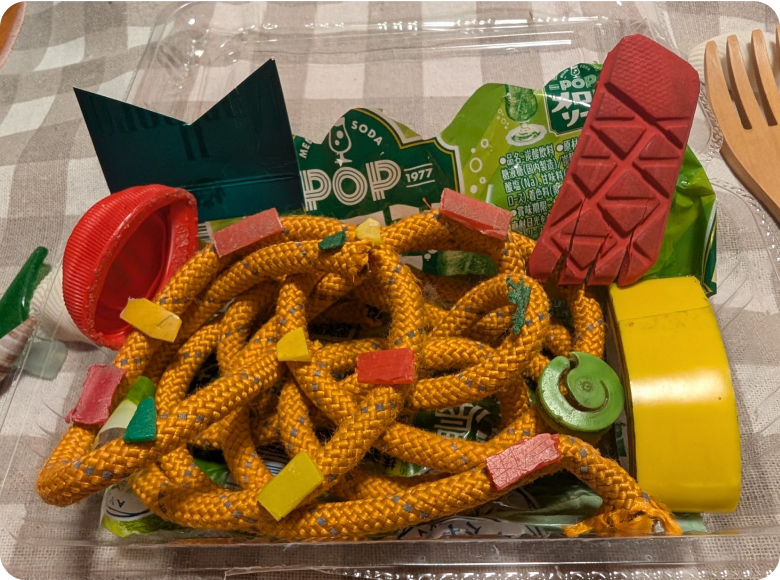



I live near the ocean. At first glance, the sea looks beautiful, but the beach is littered with so much trash. No matter how much I pick up, there's always more, and trash collecting can be hot, smelly, and sometimes feels futile.
This time, tempted by the prize of a stay at a zero-waste hotel, I decided to try making an ocean trash bento. To my surprise, trash collecting started to feel like a treasure hunt, and I was able to enjoy picking up trash.
I wondered if there would even be trash suitable for making a bento, but after just 30 minutes of collecting on the beach, I found items in all sorts of shapes, colors, and materials. Some pieces crumbled easily when I applied pressure.
Each piece of trash I picked up might have broken into hundreds of pieces if I hadn't collected it. My children, who picked up trash with me, have also become interested in trash. I believe that even if each person tackles trash collection little by little, it can amount to something powerful.
To be able to express trash from a familiar beach in such a humorous yet realistic way is truly wonderful!
The colorful "ocean castoffs" packed into the instant ramen cup were overflowing with charm that made me want to take a closer look.
If the fish could see this work, I'm sure they'd be smiling. This was a heartwarming trash bento that gave me that kind of hope!



I found this contest while looking for a summer vacation school project. When I discovered this contest, I was so excited and couldn't wait to start picking up trash.
When I actually went trash collecting with my mom around our apartment complex, there were all kinds of trash—cigarette boxes, plastic bags, and more. Among them, the most common were candy and snack wrappers.
The trash smelled bad and made me feel unpleasant. I can't change the people who litter, but I think if more people pick up trash, our town will become cleaner.
For the bento, I made sure to use colorful items, fill it up with no gaps, and arranged it to look delicious. I want to keep picking up trash even when there's no contest. Maybe next time I'll invite my friends to pick up trash together.
The creativity to transform trash collected from an apartment complex into such a delicious-looking feast, along with your skillful handiwork, shows true genius!
The way you balanced colorful candy wrappers and small items, finishing every detail to look just like the real thing, was magnificent.
Please continue to take on new challenges as a "future genius" who enjoys keeping the town clean!
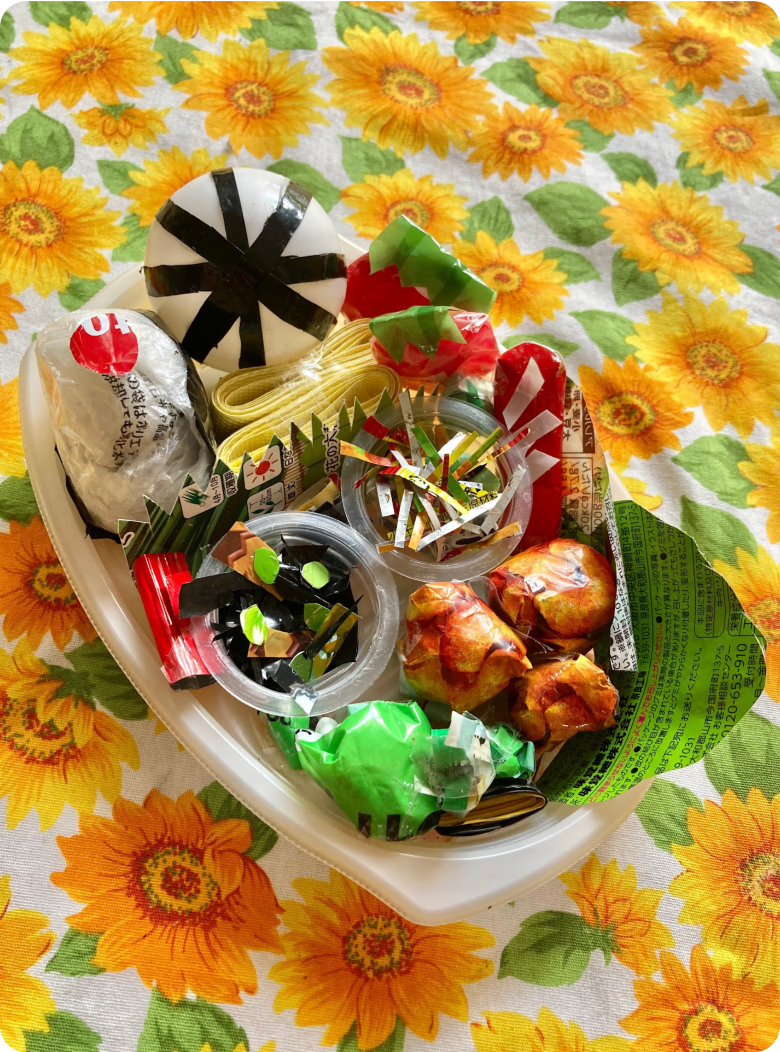
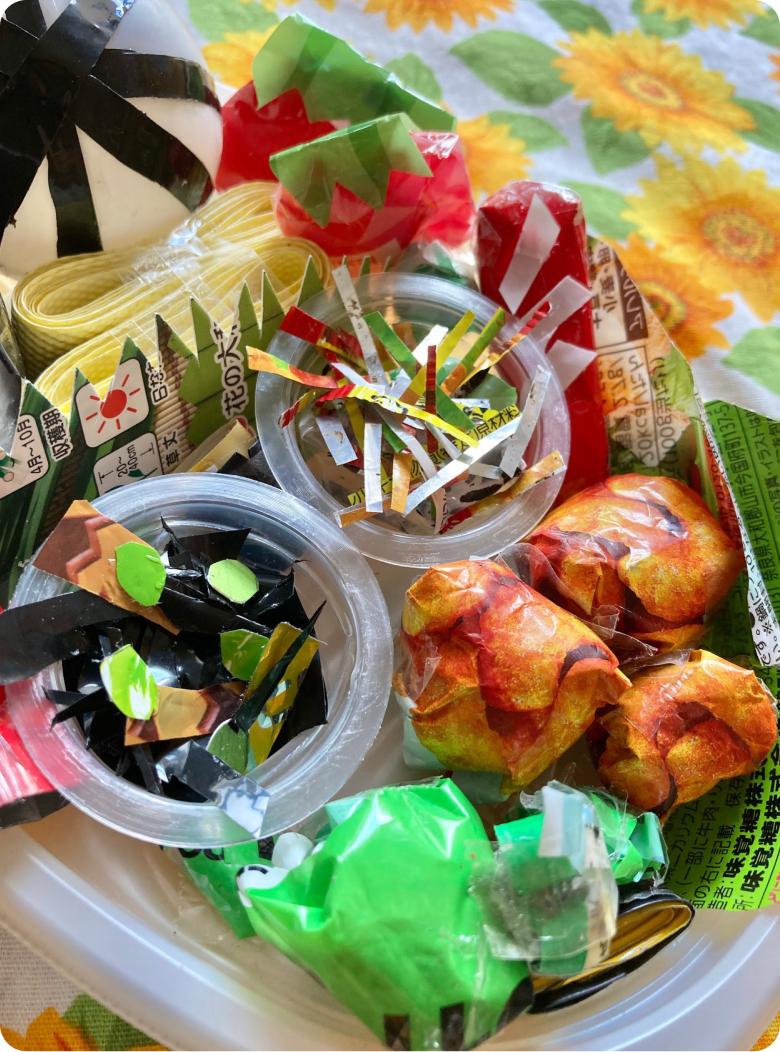

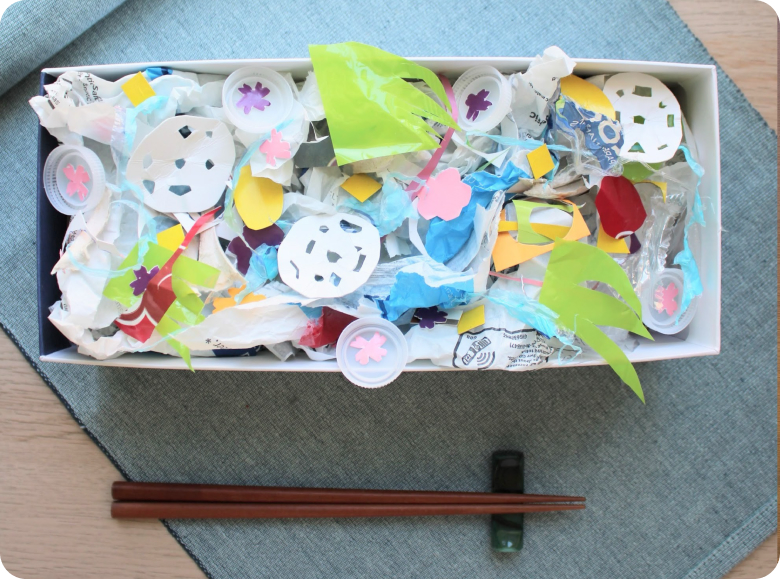

Creating art from recycled materials is refreshing.
Every material has an unique color and texture.
I had a lot of fun creating this bento.
Hope this inspires people to repurpose the materials so there is less waste for planet earth. I hope it makes people smile.
I care about the environment and I love making creative things.
Thank you for the contest. I'm so happy to participate.
It was very unique how you casually packed everyday trash and turned it into a bright, colorful bento!
It's so vibrant, you'd never think it was trash. You can really sense how much fun went into making it!
Another key point is how you selected "ingredients" with attention to color and texture.
Behind the lighthearted style lies a thoughtful look at what trash really means. It’s a work filled with love for the Earth.
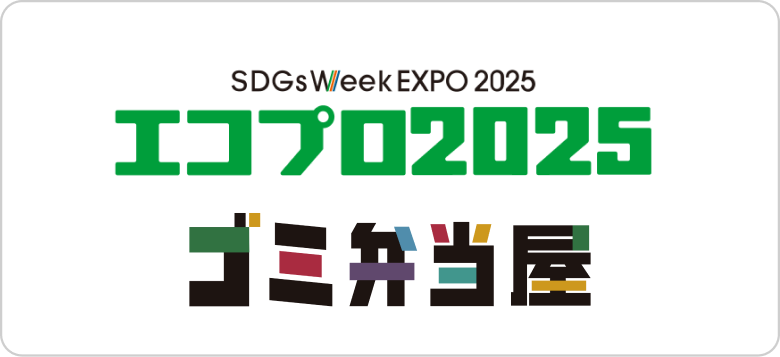
December 10 (Wed) - 12 (Fri), 2025, 10:00-17:00
Venue: Tokyo Big Sight [East Hall]
We have prepared a mini hands-on experience where you can actually make
Trash Bento. Why not think about waste issues while having fun?

We are pleased to announce that the following two individuals will serve as special judges for the contest.
Ms. Misa Enomoto will judge the entries from the perspective of a culinary professional, in light of the contest’s goal to raise awareness about “preventing trash from entering our mouths.”
Mr. Shuichi Takizawa will evaluate the Trash Bento entries using his extensive knowledge and perspectives on waste, gained through his work as a sanitation worker.
Ms. Enomoto is known for her simple recipes using fermented foods and seasonal vegetables, and is active on TV, magazines, and other media.
She runs the online cooking school “Misa Enomoto’s Cooking Class.”
Her YouTube channel “Seasonal Cooking by Misa Enomoto” has over 340,000 subscribers, and her Instagram (@misa_enomoto) is also widely followed.
Her latest book, “Everyday Fermented Ingredient Recipe Notebook” (GAKKEN), is now on sale, along with many other publications.
While performing as a member of the comedy duo “The Machine Guns,” Mr. Takizawa also works as a sanitation worker at a waste collection company.
Based on his experiences during waste collection, he actively shares insights on social trends, food loss issues, and environmental problems through social media, writing, and lectures.

Never tried crafting before? Don’t worry.
We’ve created easy-to-follow instructions on how to make your own Gomi-Trash Bento.
Choose from a video or a downloadable PDF—whichever works for you.

Submissions will be evaluated based on the following:
Judging will be conducted by the organizing committee and two special guest judges.

Outstanding works will be selected from a variety of perspectives, with prizes tailored to each category.
Winners will be announced on this website and on Publicis Japan’s official Instagram account
(Scheduled for late September to mid-October).
Notifications will be sent to winners via their registered email address.
Prizes will be shipped within one month of the announcement, though timelines may vary slightly depending on circumstances.


Located in Japan’s first town to declare a Zero Waste policy, HOTEL WHY offers an eco-conscious travel experience. This prize includes a one-night stay for a family of three.

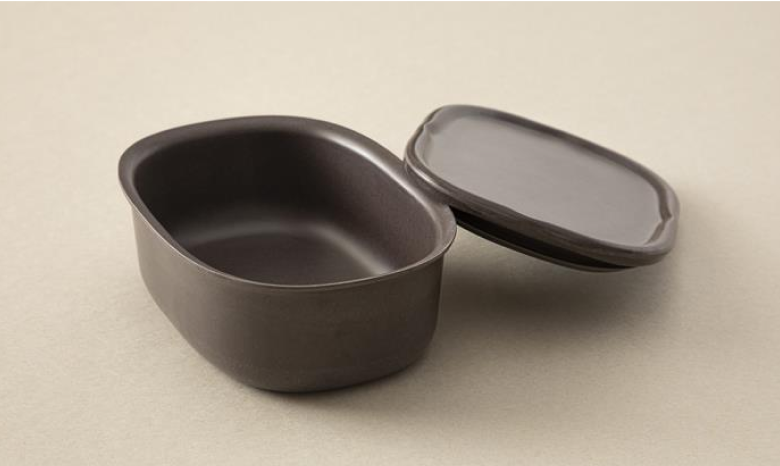
An award given to the most mouthwatering creation—so realistic, it looks good enough to eat. This eco-friendly bento box is made from coffee grounds and bamboo powder—plant-based materials that naturally return to the earth. When buried in soil, it begins to decompose in about six months through the power of nature.

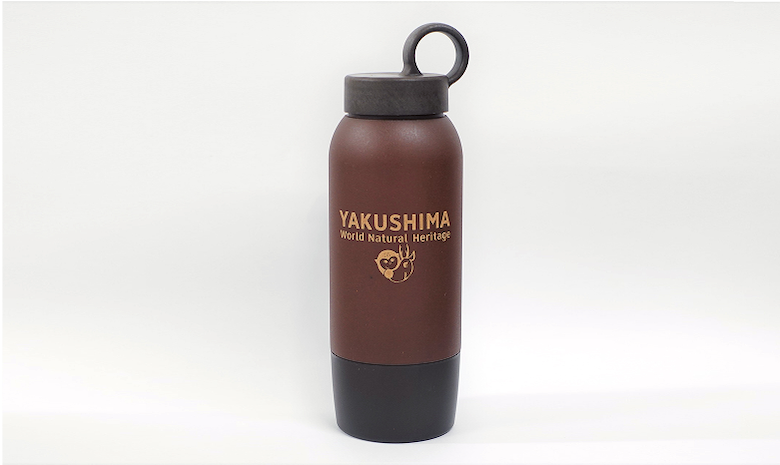
An award given to works that demonstrate excellence in the ingenious reuse of waste materials. This my bottle was created by utilizing fallen trees, buried wood, and old stumps left behind from past logging that had been lying dormant in warehouses on Yakushima Island.

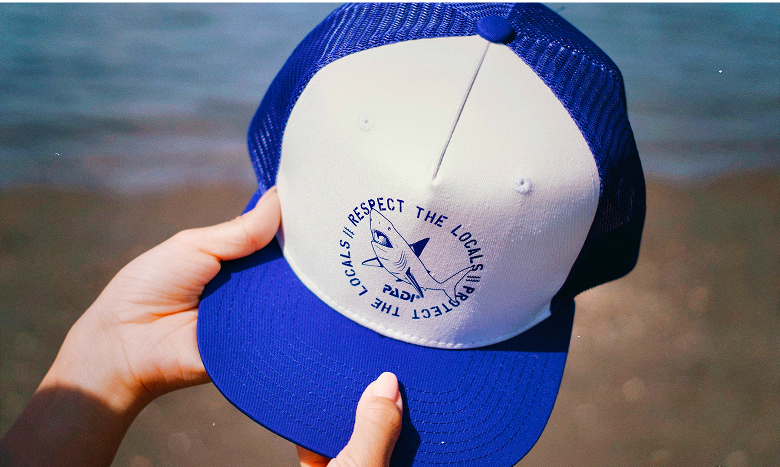
Awarded to works made using trash collected from rivers or the sea—bento boxes so charming they might even make the fish smile. The PADI Cap, made from the equivalent of eight recycled plastic bottles, is simple, comfortable, and versatile.

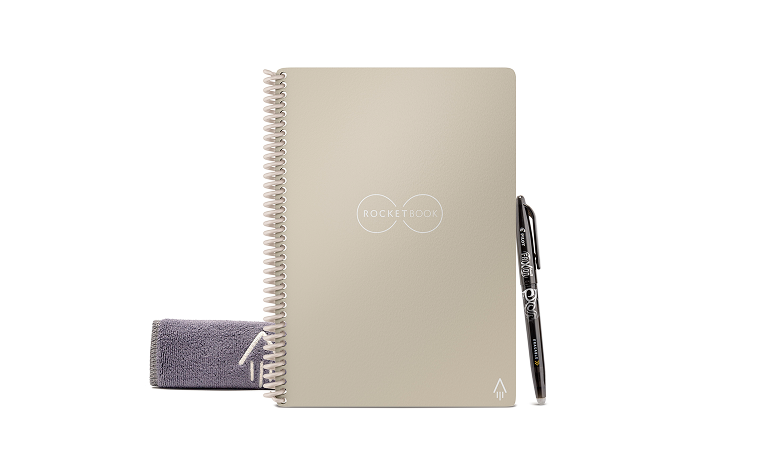
Awarded to promising creations that hint at a future bento artist in the making. This innovative notebook can be digitized via app and reused over 1,000 times—offering a sustainable way to create without using paper. *Selected from participants aged 10 and under. *Colors are subject to change.

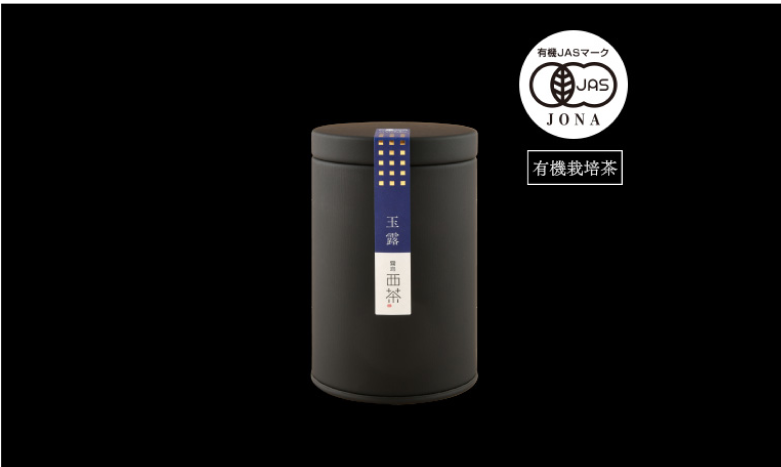
Awarded to works that reflect the first inspiring steps toward tackling the waste problem. This gyokuro green tea is grown with extra care—free from pesticides and chemical fertilizers. A luxurious cup that fills your mouth with rich, umami flavor. Treat yourself to a moment of indulgence.
The trash you collect on land—if left behind—can be carried by rain and wind to the sea,
where it becomes marine debris.
Learn more about the global issue of ocean waste.

Creator's Comment
[Stadium Gourmet]
There is an activity where we pick up trash around the stadium after watching our soccer team's matches. I made this bento box using the trash collected during those cleanups. Since it is part of a project called "Continuing into the Sea," I had a general understanding that it was probably about preventing litter thrown away on the streets from flowing into the ocean and being ingested by marine life, which causes them to die.
I'd heard that "humans are also eating microplastics," but I had no idea we were consuming the equivalent of one bento box per year. The most common items were snack wrappers and convenience store bags, followed by plastic bottles. All of these were probably discarded thinking, "just this one time won't hurt.”
Yet that same trash might end up back inside our own bodies. Trash belongs in the trash can. I realized that to make the obvious truly obvious, it's crucial not to treat these problems as someone else's issue. I submitted this because I learned so much through creating this trash bento, and I came to see it as a much more personal problem than I'd expected.
Judge's Comment
The material selections for expressing the "essence" of each food item were exquisite—onigiri using bubble wrap to represent rice, shrimp tempura utilizing package colors, and tamagoyaki (egg rolls) shaped from sponge.
Even from the photographs alone, it's abundantly clear that each element was crafted carefully and with great attention to detail.
The very concept of transforming trash collected from stadium cleanup activities into "stadium gourmet" is a point where creativity truly shines, and we evaluated it highly for that reason.